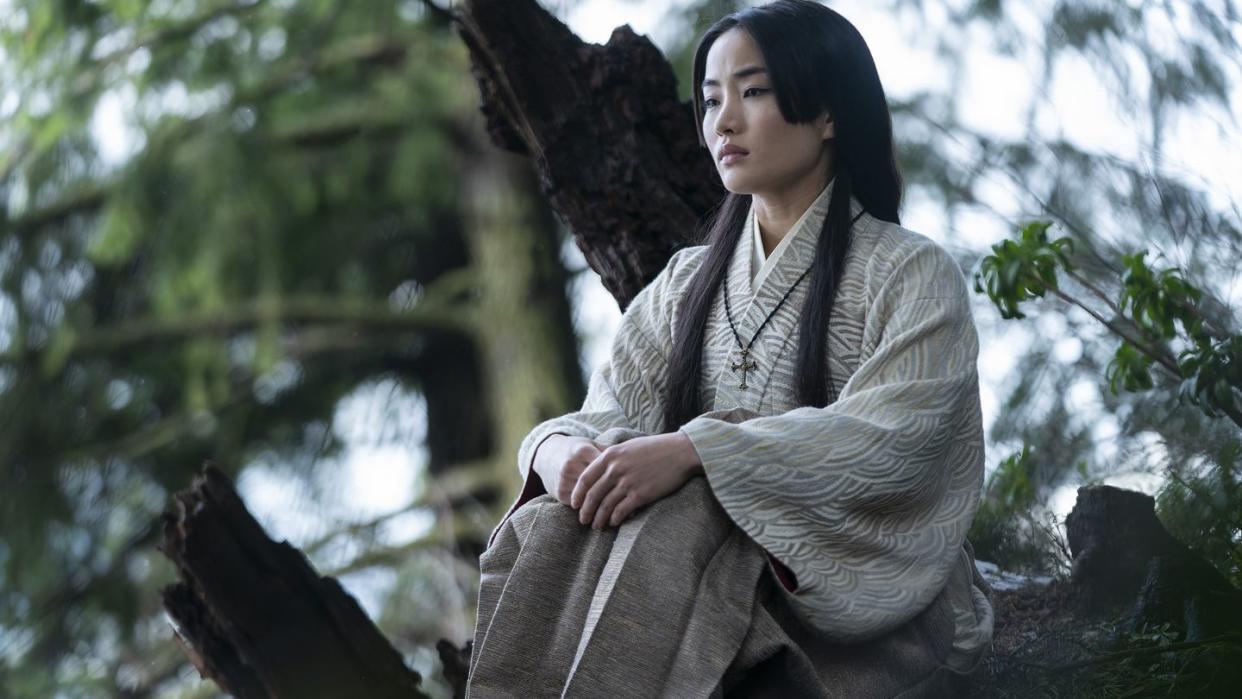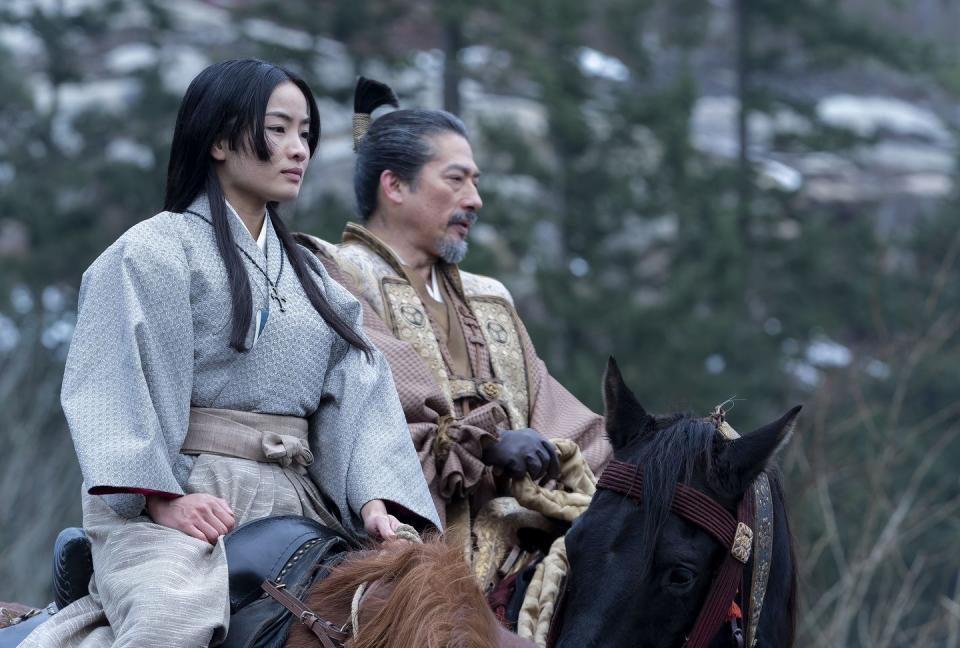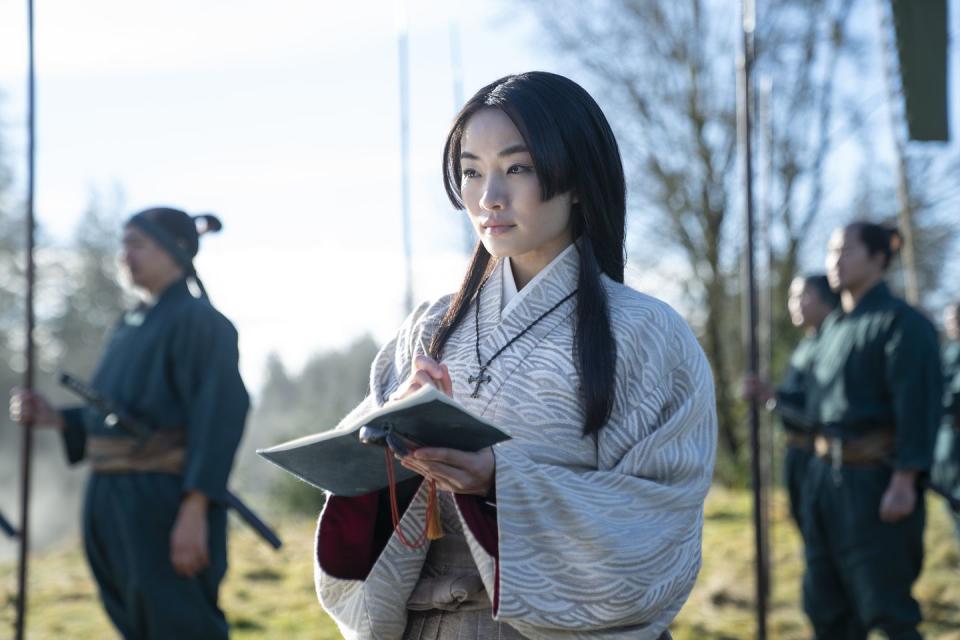Inside the Incredible Life of Mariko’s Real-Life ‘Shōgun’ Counterpart

- Oops!Something went wrong.Please try again later.
- Oops!Something went wrong.Please try again later.
- Oops!Something went wrong.Please try again later.
"Hearst Magazines and Yahoo may earn commission or revenue on some items through these links."
This story contains historical spoilers for FX’s Shōgun.
Life wasn't kind to women in feudal Japan. As Shōgun details through the lives of Toda Mariko (Anna Sawai), Ochiba (Fumi Nikaido), and Fuji (Moeka Hoshi), a woman's life choices—if you can even call them that—consisted of wife, mother, housekeeper, and concubine. That said, we see Lord Yoshii Toranaga (Hiroyuki Sanada) take significant interest in Mariko throughout the FX drama. He places great trust in her judgment and reasoning, often going to her for advice pertaining to his rivals in Osaka. He also asks her to serve as his official translator.
Like many Shōgun characters, Mariko has a real-life counterpart: Akechi Tama. Her role in Lord Tokugawa's ascension to the shogunate played out similarly to what's represented in the series. Naturally, there are some major differences when it comes to Mariko's function within the story and her relationship to John Blackthorne (Cosmo Jarvis). But if you're looking for the true story of Mariko's real-life counterpart, here's everything you need to know.

Who Was Akechi Tama?
Born the daughter of general Akechi Mitsuhide, Akechi Tama was a highborn woman and a member of the aristocratic class in feudal Japan. Her father served under Lord Oda Nobunaga, the first great unifier of Japan and the de facto ruler of the country in the early 1580s. However, everything changed for the Akechi family when Mitsuhide betrayed his lord and assassinated Nobunaga in 1582 during a tea ceremony at Honnō-ji temple. To this day, scholars and historians debate his potential motivations. Regardless of the reason why her father turned into a traitor, he was defeated at the Battle of Yamazaki and killed just a month later.
The events of this incident are depicted in Shōgun via a flashback in episode 6, which serves as the backdrop for Mariko and Ochiba's strained relationship. Though Ochiba's counterpart, Yodo-dono, wasn't exactly Nobunaga's daughter, Shōgun maintains that Mariko's father, Akechi Jinsai, was still a turncoat general who mysteriously assassinated the former warlord. In fact, FX explains most of the information about Shōgun's real-life counterparts and how they match up within the story in a very helpful character guide that even features a detailed family tree. The series even goes so far as to suggest that Toranaga secretly orchestrated the attack in episode 6, though Ochiba makes the allegation and it remains unproven.
Shōgun also borrows Akechi Tama's marriage at the age of 16 to samurai Hosokawa Tadaoki, who is very loosely the basis for Buntaro (Shinnosuke Abe). Other than his relationship with Mariko, Buntaro is an original character in Shōgun. Still, Buntaro is able to save Mariko from death due to their marriage. His actions mirror how Akechi Tama survived the usual punishment for a traitor's daughter in feudal Japan, even if she was mostly hidden and confined to the Hosokawa mansion in Osaka. According to FX, they actually shared a happy marriage and had five children together.

Shōgun, Part One (The Asian Saga)
amazon.com
$18.69
She Converted to Catholicism
During this time in seclusion, Akechi Tama turned to Christianity. The noblewoman wasn't allowed much lenience, but she would look to Osaka's church for refuge whenever she could. Christianity was already spreading among the lords of Osaka, with Spanish and Portuguese missionaries successfully converting some of their wives.
When the original Shōgun miniseries premiered in the 1980s, George Elison, a professor of East Asian languages and cultures at Indiana University, told The New York Times, "There’s no doubt that she was a convinced Christian, almost a saint." Akechi Tama took the Christian name Maria when she was baptized, and she officially changed her name to Hosakawa Gracia. In episode 8, viewers can even hear Father Alvito briefly refer to Mariko as Maria.

She Never Met Blackthorne
John Blackthorne's real-life counterpart is William Adams, the first English sailor to reach Japan. He maintained a curious friendship with Lord Tokugawa but never had a relationship with Akechi Tama.
According to History Today, the two never even met. "The historical Will Adams never laid eyes on the historical Lady Gracia," historian Henry Smith wrote back in 1981. He stated that their relationship—even as a translator and a foreigner—was not "conceivable in Japan" at that time. "The daimyo ladies of 16th-century Japan were strictly sequestered and rarely had the chance to meet any men other than immediate family," Smith explained.
Her Death Helped Turn the Tide of the War
Akechi Tama never served as Tokugawa's translator, even though she was reportedly fluent in both Portuguese and Latin. Still, Smithsonian magazine reported that her family did hold close ties to Tokugawa. She even lived among the other warlords' wives in Osaka, including Tokugawa's. Though Akechi did not have anything close to Mariko's mission in episode 9, the surprise raid on her camp was historically accurate.
After Ishida Mitsunari (Ishido in Shōgun) ordered his troops to take the families in Osaka hostage, their first stop was the Hosokawa mansion. According to FX's official character guide, Akechi refused capture and committed suicide. Her Christian faith deemed suicide a sin, so it's alleged that she commanded one of her servants to kill her. Akechi's death shocked Osaka.
In a letter to one of his closest allies, Ishida reportedly wrote that he was not to blame for her death. "I ordered to take Tadaoki's wife and child as hostages, but the samurai at the Hosokawa family's Osaka residence mistakenly believe that they should commit suicide, stabbed her death, set fire to the house, and killed themselves," he wrote. It was too late for forgiveness. Ishida ordered her capture, and he could not blame her death on a misunderstanding.
Following her death, Akechi's husband joined Tokugawa's side at the Battle of Sekigahara. We don't want to spoil the events of the finale for Shōgun fans, but take Mariko's shocking death as an indication that no one is backing down.
You Might Also Like

